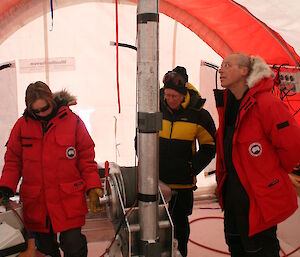As a result, the study recommends that water and other natural resource managers use three forms of rainfall information to develop water management plans – instrumental (rain gauges), palaeoclimate (ice cores) and climate models.
The research, led by Matthew Armstrong and Dr Anthony Kiem from the University of Newcastle, and involving Dr Tessa Vance from the Australian Antarctic Program Partnership, Institute for Marine and Antarctic Studies, compared past rainfall records from rain gauges and ice cores, and future rainfall projections from global climate models.
The study focused on the Lockyer catchment in south-east Queensland, which shares an atmospheric link with Antarctica that influences its rainfall.
“The ice cores, from Law Dome in East Antarctica, contain a history of natural climate variability over the past 1000 years, which can be used to infer east Australian rainfall over that time,” Dr Vance said.
“This allows us to better understand the natural variability in rainfall in the region, including prolonged droughts, before instrumental records began.”
Climate models, in contrast, allow the effect of human-made climate change to be factored into future rainfall projections.
The comparison showed that instrumental records do not encompass the full range of hydroclimatic conditions that could be possible from now until 2100, with significantly drier periods observed in the palaeoclimate record and projected by the ‘worst case scenario’ in climate models.
“This means that water management strategies developed using only instrumental data underestimate current and future hydroclimatic risk,” Mr Armstrong said.
“Our study recommends that water managers evaluate the performance of existing water supply systems using a combination of instrumental, palaeoclimate and projected model data.”
The research was published in the Journal of Hydrology: Regional Studies in August 2020.


